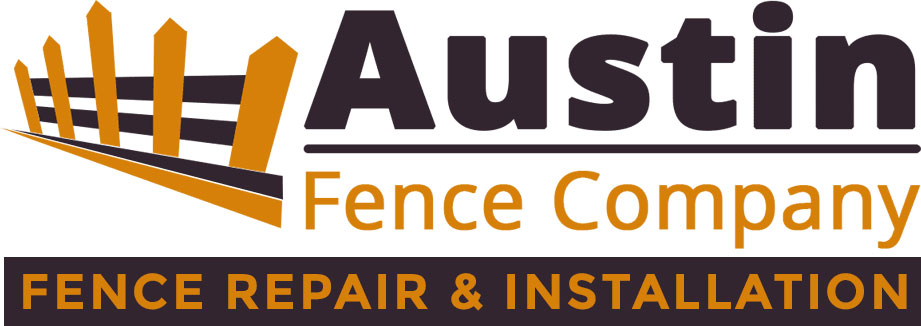
Table of Contents
ToggleTL;DR
Austin’s climate—including scorching summers, spring storms, high humidity, and limestone-heavy soil—directly impacts fence repair needs. Heat cracks vinyl and dries wood, storms loosen posts, and humidity accelerates rust and rot. Understanding how weather affects your fence helps you identify issues early, schedule timely repairs, and select durable materials that will withstand the elements.
Table of Contents
Why Austin Weather Makes Fence Repair Unique
Unlike many U.S. cities, Austin combines intense heat, seasonal storms, and rocky soil. This means:

- Wooden fences dry, crack, and warp more quickly.
- Metal fences corrode without protective coatings.
- Posts shift more easily in soil that is rich in limestone and clay.
- Homeowners often face repairs twice as frequently compared to those in milder climates.
Helpful read: The Complete Guide to Fence Repair in Austin
Summer Heat: Cracking, Warping, and Fading
Austin summers regularly hit 100°F+. The sun accelerates wear on many fence types:
- Wood → boards warp, split, or fade without staining.
- Vinyl → panels can soften, sag, or discolor.
- Composite → expands in heat, causing misalignment if not installed correctly.
Repair costs rise because heat damage often spreads across large sections.
Helpful resource: Best Fence Materials for Austin Homes
Humidity and Moisture: Rot and Rust Problems
Humidity peaks in spring and summer, soaking into materials.
- Wood → absorbs moisture, leading to rot and insect damage.
- Iron → rust spreads rapidly, especially at joints and gates.
- Chain link → coated versions resist better than bare steel.
Neglecting rust or rot can mean simple $200 repairs become $1,500 rebuilds.
Storms and High Winds: Structural Damage Risks

Spring and fall bring strong winds and thunderstorms.
- Posts loosen in waterlogged soil.
- Panels blow loose, especially on privacy fences.
- Gates shift or break under wind stress.
Service link: Fence Repair in Austin
Seasonal Shifts in Austin: When Repairs Spike
- Spring → Storm damage, leaning posts, early wood rot.
- Summer → Warping, fading, insect damage.
- Fall → High winds, broken gates, storm prep repairs.
- Winter → Fewer repairs, but moisture-related rot is common.
Soil and Drainage Issues After Heavy Rain
Austin’s clay and limestone soils expand and contract with rain, creating shifting foundations.
- Posts tilt or sink.
- Concrete bases crack.
- Water pooling at the base of wood fences accelerates rot.
Pro tip: Add gravel bases and slope grading during repairs to prevent repeat issues.
Materials Most Affected by Austin Weather
Material | Weather Weakness | Typical Repair Need |
Wood | Heat & humidity | Rot, warping, fading |
Chain Link | Storm winds | Sagging mesh, bent posts |
Iron | Humidity & rain | Rust, joint corrosion |
Vinyl | Extreme heat | Cracking, fading |
Composite | Heat expansion | Panel misalignment |
Preventive Measures to Reduce Weather Damage
- Stain wood every 2–3 years.
- Use powder-coated iron to resist rust.
- Add gravel bases for better post drainage.
- Trim plants away from fences to reduce trapped moisture.
- Schedule inspections after major storms.
Helpful read: Fence Maintenance Best Practices
Best Times of Year for Fence Repairs in Austin
- Spring → Address storm damage before summer heat worsens issues.
- Fall → Ideal weather for larger repairs and replacements.
- Winter → Good for preventive maintenance; contractors often have more availability.
Seasonal Fence Care Checklist for Austin Homeowners
Season | Common Issues | Maintenance Tips |
Spring | Storm damage, loose posts, rot | Inspect after storms, reinforce posts, and reseal wood |
Summer | Heat damage, fading, and insect activity | Stain wood, clean composite/vinyl, check for cracks |
Fall | High winds, shifting gates | Tighten hinges/latches, secure panels |
Winter | Moisture, soil contraction | Inspect for leaning posts, clear debris near the fence base |
By following this seasonal checklist, Austin homeowners can reduce the frequency of repairs and extend their fence’s life by 5–10 years.
Real-World Examples of Weather-Related Fence Repairs in Austin

- South Austin: A cedar fence leaned after spring storms softened the soil. The repair involved resetting posts in the concrete and adding gravel drainage.
- Westlake: An iron fence near a pool developed rust from humidity. Crews sanded, primed, and repainted to prevent further corrosion.
- Round Rock: Chain link sagged after high winds. Repairs included replacing tension bars and straightening bent posts.
- Cedar Park: Vinyl fence panels warped in summer heat. Damaged panels were swapped for UV-resistant replacements.
These cases show how local climate directly drives repair needs and costs.
FAQs
What type of weather damages fences the most in Austin?
Heat, humidity, and storm winds are the most significant threats.
How often should I inspect my fence in Austin?
At least twice a year and after major storms.
Which fence material best withstands Austin's weather?
Composite and powder-coated iron last longest with minimal upkeep.
Does Austin weather shorten fence lifespan?
Yes, fences in Austin often last 5–10 years less than in milder climates without proper maintenance.
What’s the best way to protect a wood fence from the weather?
Use cedar or pressure-treated wood, and re-stain or seal every 2–3 years.
Protect Your Fence from Austin’s Weather Challenges
Austin’s weather isn’t kind to fences—but timely repairs and the right materials keep yours strong. From sun-cracked boards to storm-damaged posts, acting quickly prevents expensive replacements. For weather-ready repairs you can count on, trust Austin Fence Company —your local experts in fence repair built for Austin’s climate.
